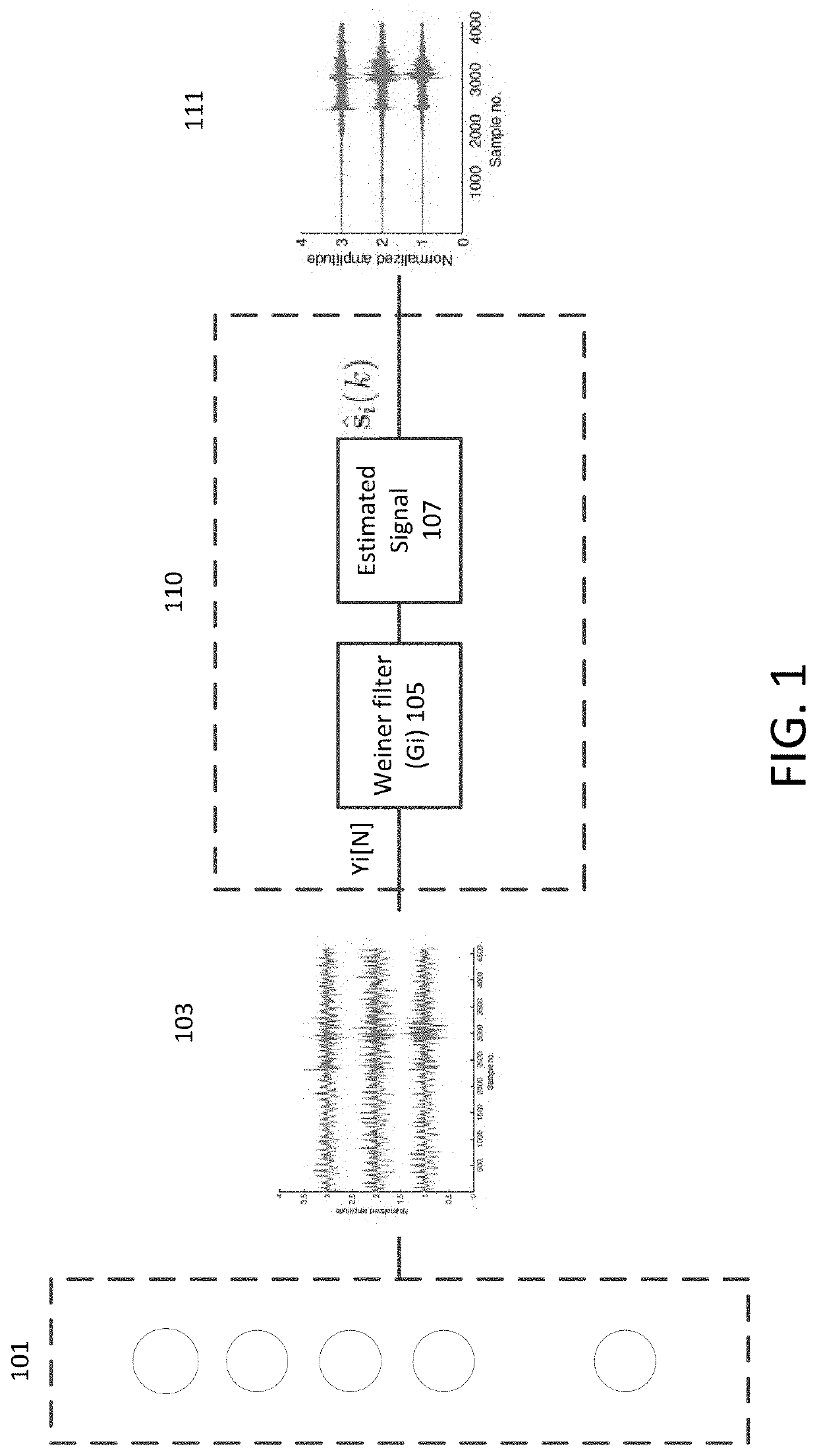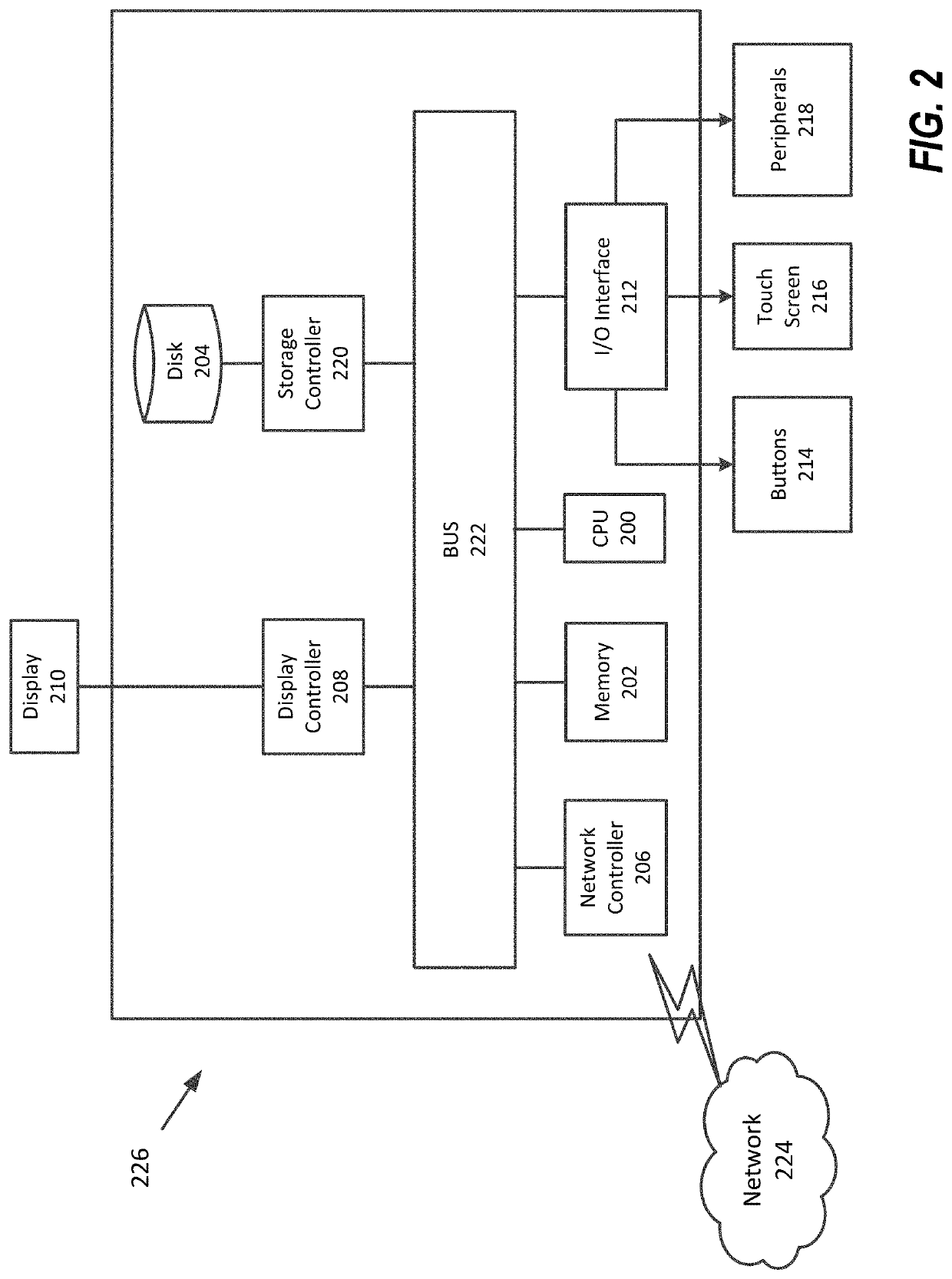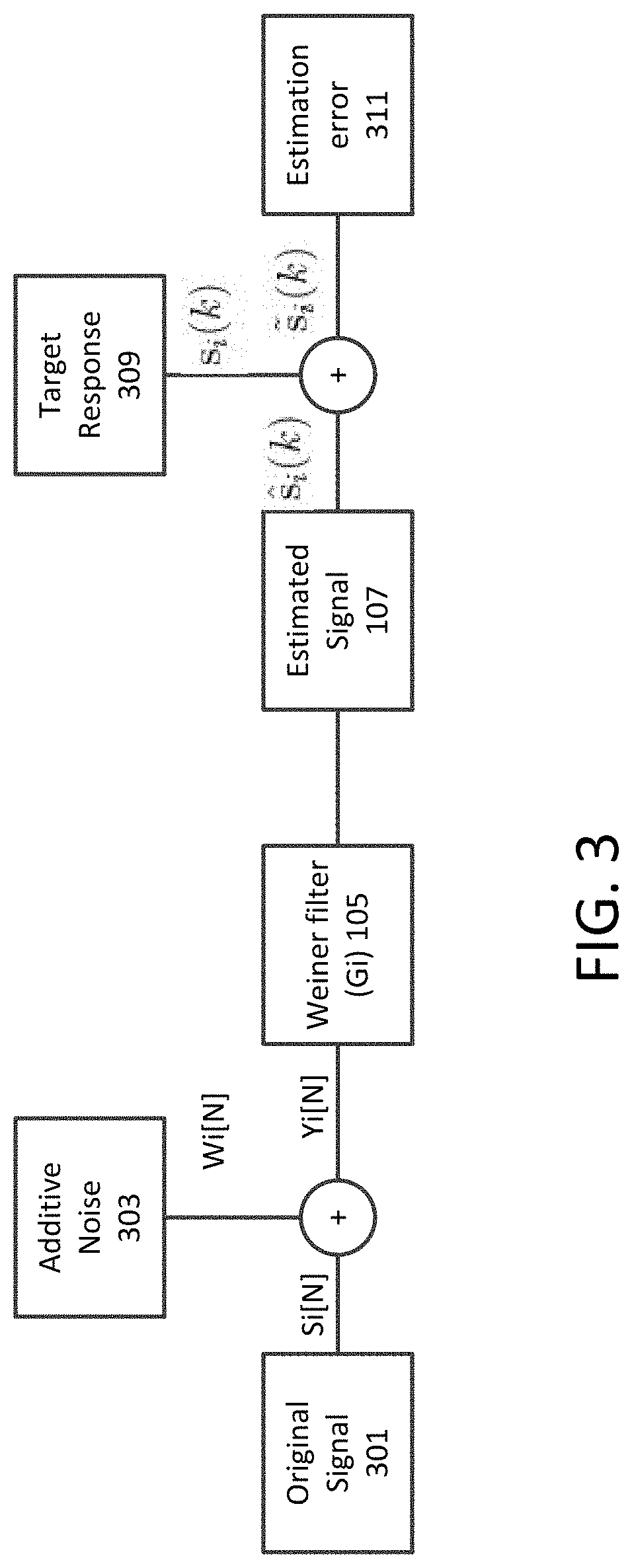Adaptive noise estimation and removal method for microseismic data
- Summary
- Abstract
- Description
- Claims
- Application Information
AI Technical Summary
Benefits of technology
Problems solved by technology
Method used
Image
Examples
example implementations
[0100]In this section, the robustness of the disclosed system is applied to synthetic, pseudo-real and field data sets. Since the system is without any specific assumption on noise, two exemplary implementations, correlated and uncorrelated noise, are described.
[0101]FIG. 8 depicts the synthetic data set generated using a minimum-phase wavelet (microseismic source signature) having center frequency of 5 Hz. It is assumed that 50 receivers are placed on the surface. Furthermore, a sampling frequency of 1 kHz is used with a constant medium velocity. Testing revealed that values of η, γ, β, αp and αd are 0.85, 0.998, 0.85, 0.2, and 0.95, respectively.
[0102]The original traces are contaminated with two kinds of noise, white Gaussian noise and correlated noise, as shown in FIG. 9A and FIG. 9B, respectively. The SNR of the noisy observation is set to −6 dB. The difficulty in picking the microseismic event is obvious. The concept of FDW and CEW is depicted in FIG. 10. Pww,i(k) and Pyy,i(k)...
PUM
 Login to View More
Login to View More Abstract
Description
Claims
Application Information
 Login to View More
Login to View More - R&D
- Intellectual Property
- Life Sciences
- Materials
- Tech Scout
- Unparalleled Data Quality
- Higher Quality Content
- 60% Fewer Hallucinations
Browse by: Latest US Patents, China's latest patents, Technical Efficacy Thesaurus, Application Domain, Technology Topic, Popular Technical Reports.
© 2025 PatSnap. All rights reserved.Legal|Privacy policy|Modern Slavery Act Transparency Statement|Sitemap|About US| Contact US: help@patsnap.com



